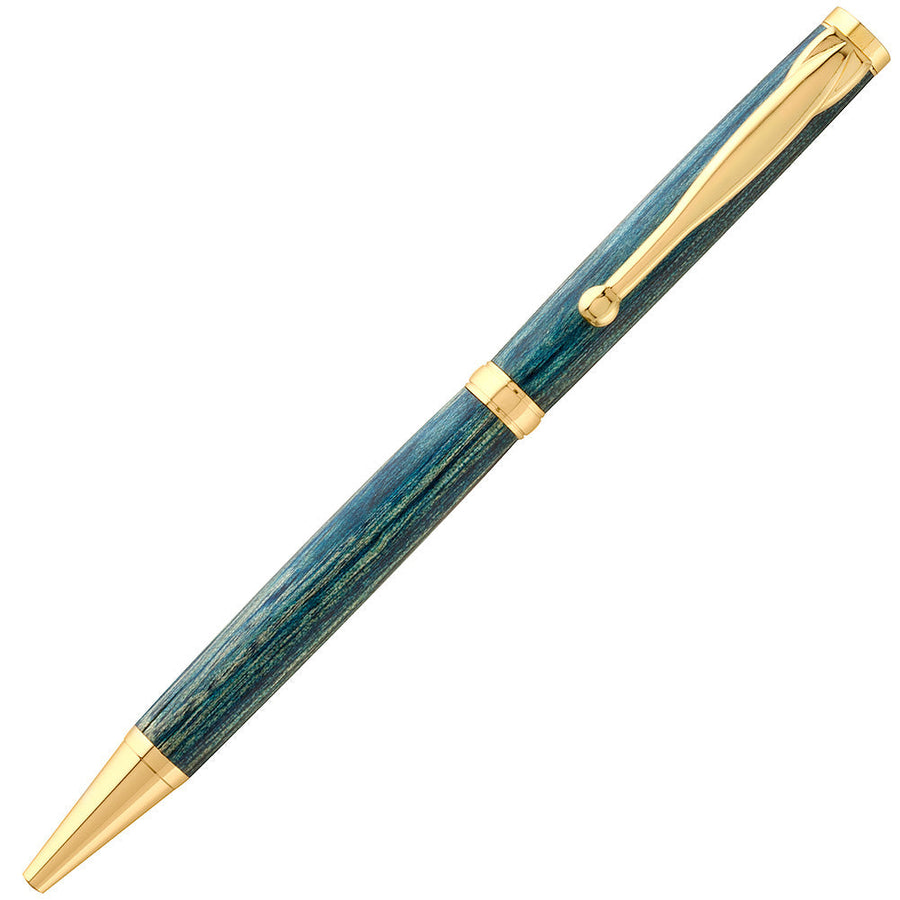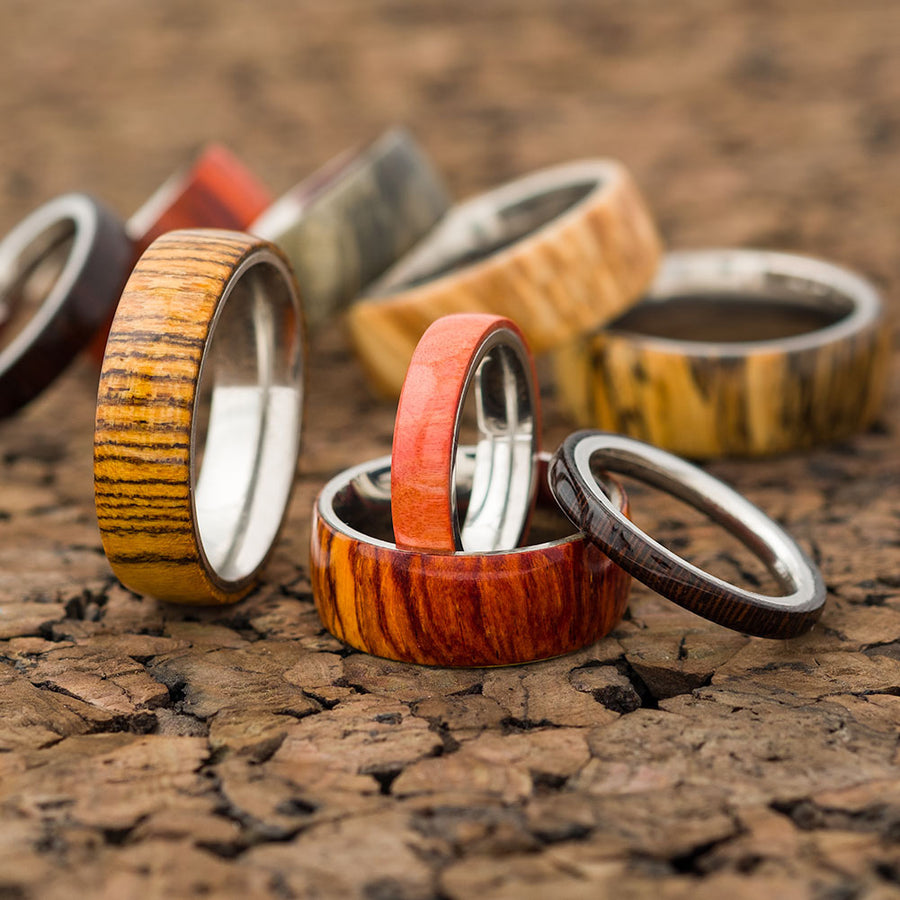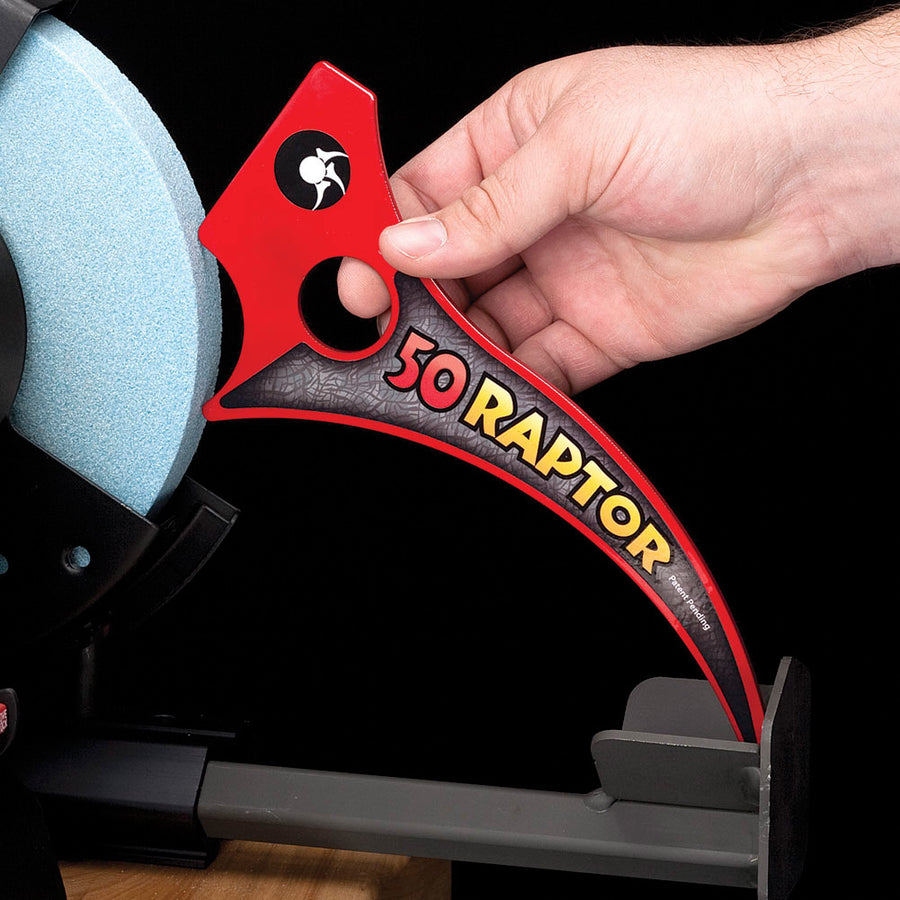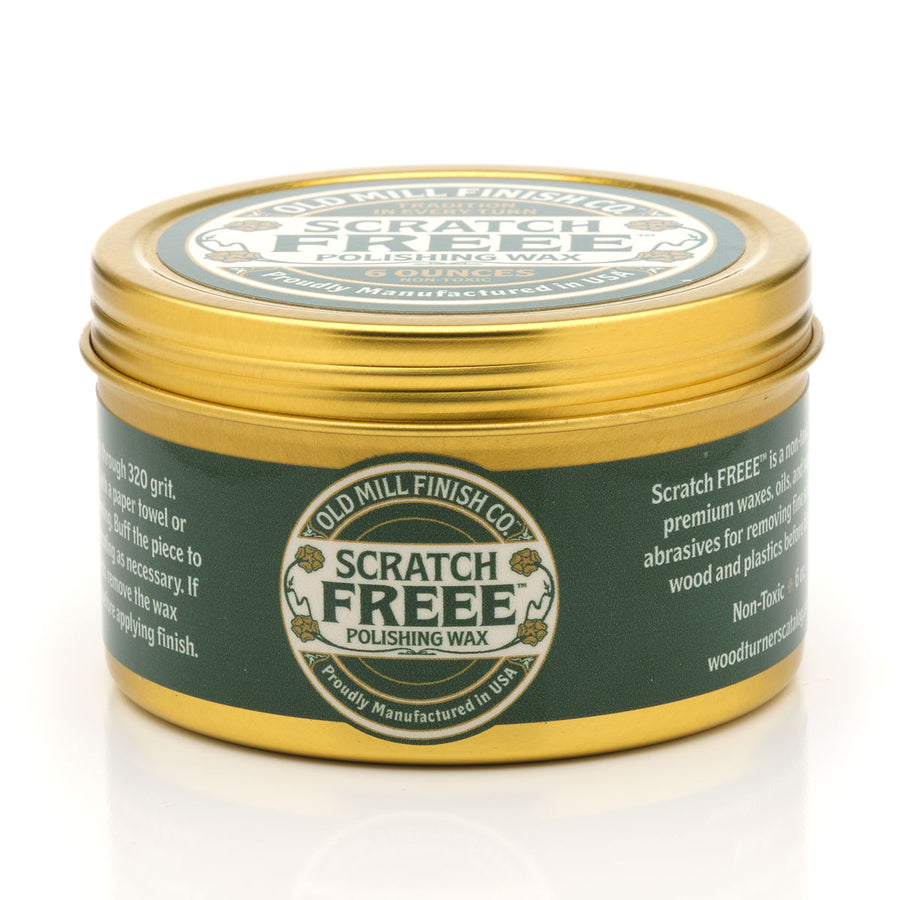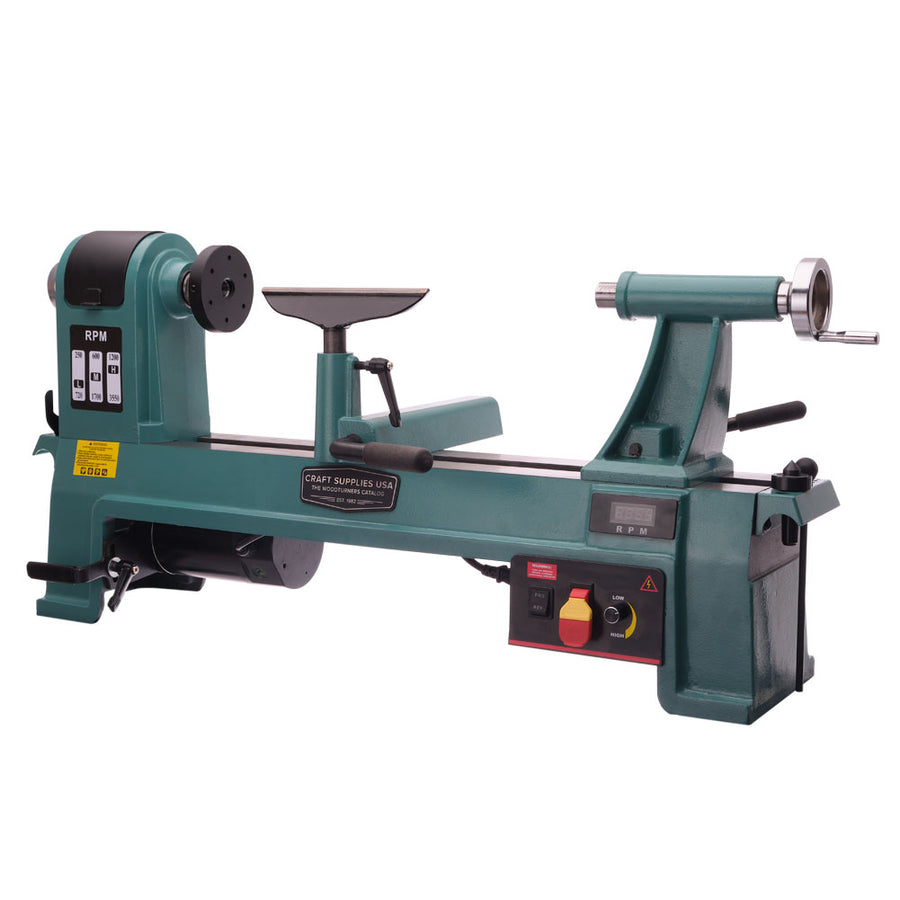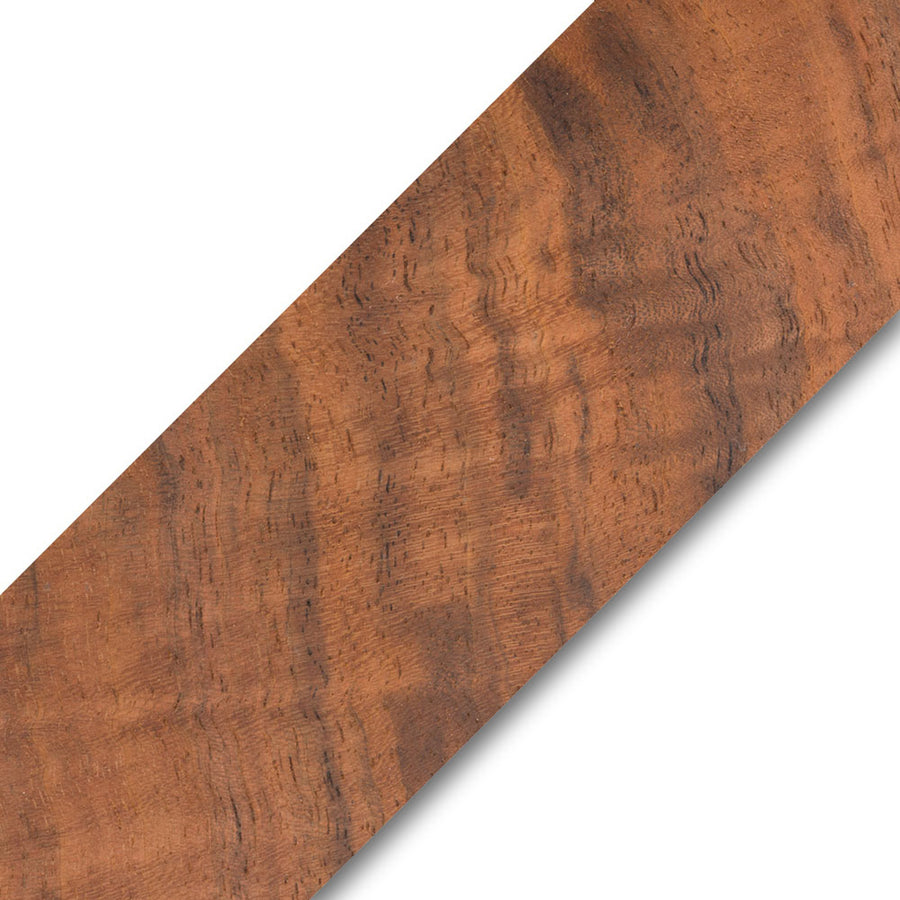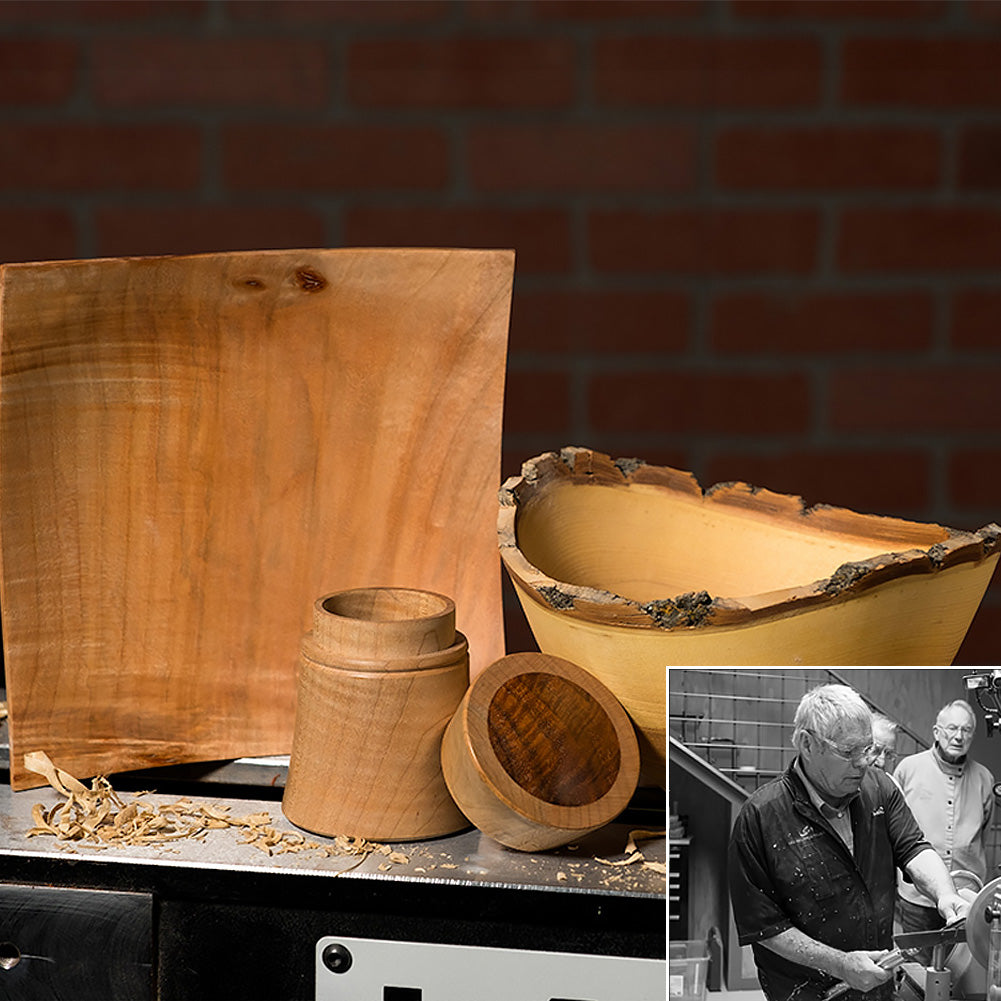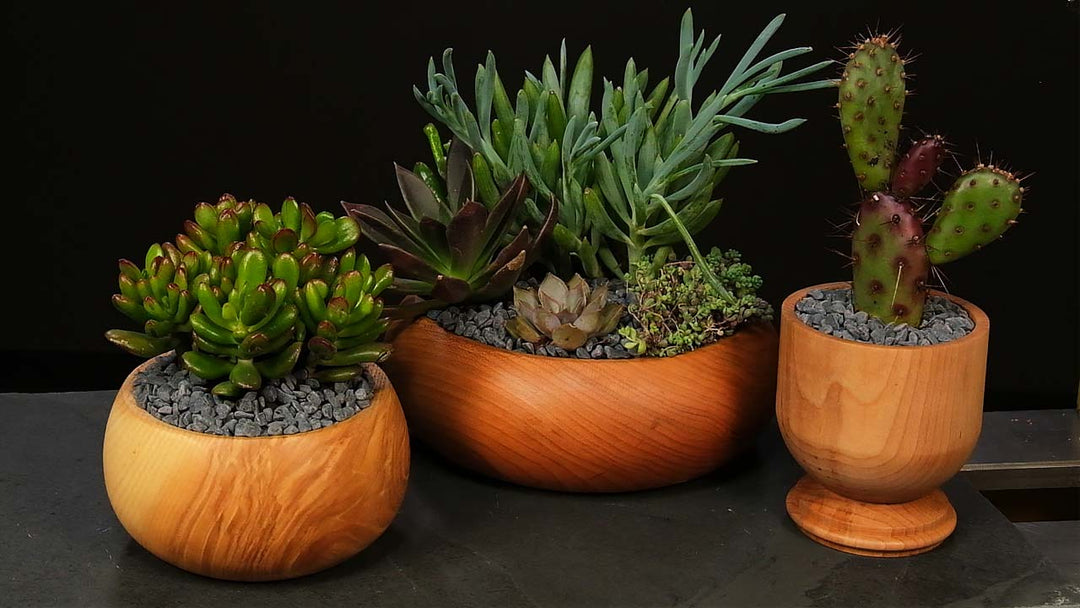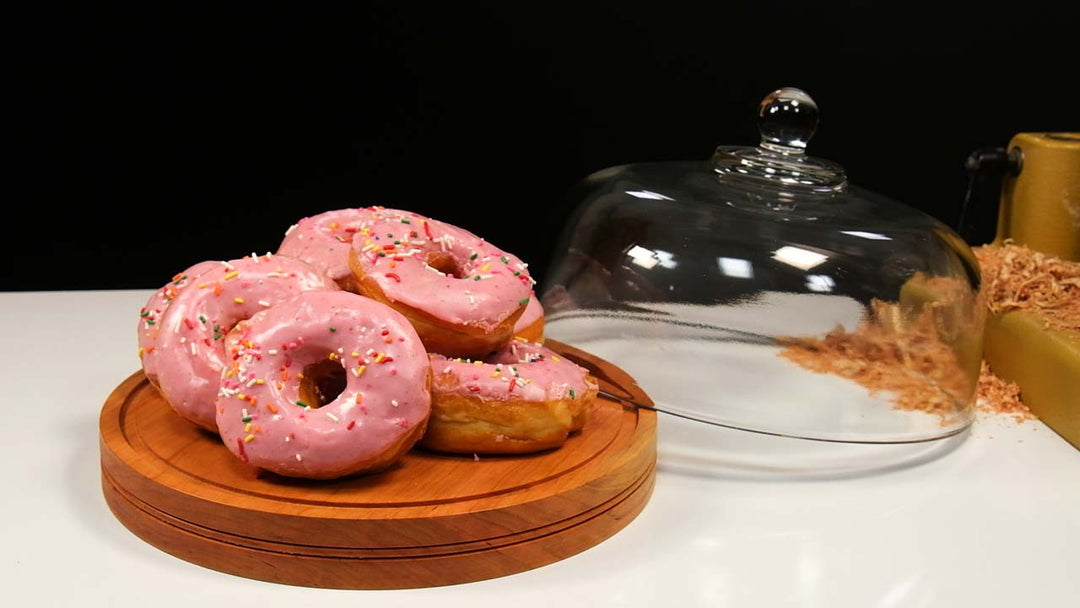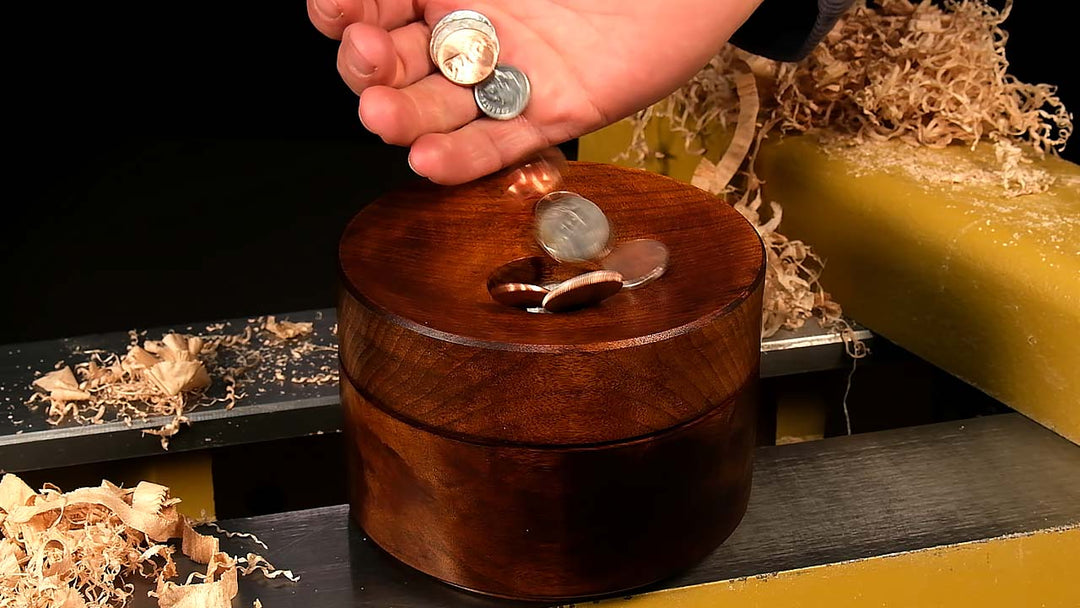Storing and Turning Unseasoned Wood
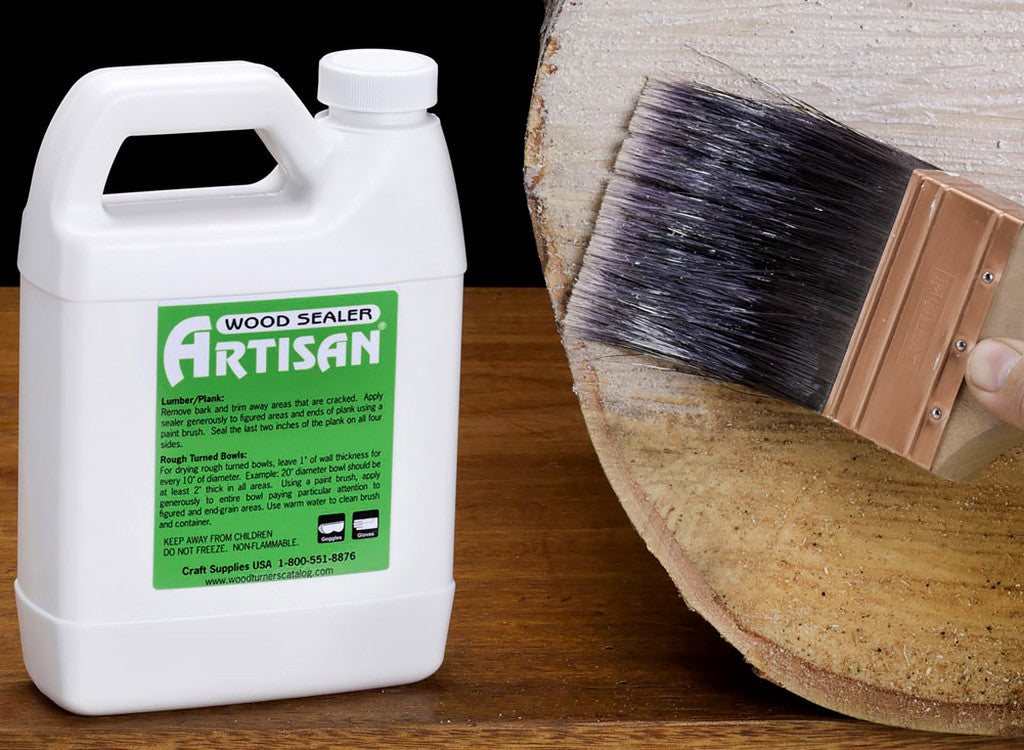
Improper storage of wood blanks can cost you hundreds of dollars. Learn how to properly store and turn unseasoned wood with this woodturning article by Dale Nish.
Unseasoned Bowl Blanks
Timber is very difficult to dry in thick pieces, due to the length of time involved and the fact that in order to reduce cracking, the wood inside the block needs to dry at about the same rate as the outside of the block. Commercially, kiln dried lumber is usually not available thicker than 2″ and most often only as 1″. Basically, roughing out bowls allows a block of wood 3″ or 4″ thick to be reduced to about the thickness of 1″ lumber, only in the shape of a bowl. This reduces drying time dramatically, as well as checking or cracking. If you want to turn large bowls from solid timber, you must learn how to turn and season wet wood.
Craft Supplies USA Bowl Blanks
- Most blanks are shrink wrapped.
- Some blanks such as black acacia, osage orange and others may be waxed on all sides.
- The wood moisture content may vary from wet to fairly dry.
Storage Until Ready To Use
- Keep in a cool area, away from heat and direct sunlight.
- Any sign of wood beginning to crack, put the blank in a plastic bag.
- Light color woods which have been shrink-wrapped may show signs of staining or spalting if this is a problem, remove from the shrink-wrap, rough out the turning.
Turning the Bowl and Roughing out for Drying
- Bandsaw the blank into a round disc.
- Mount the blank on the lathe, typically with a screw center chuck or faceplate fastened to the top of the bowl blank.
- Move the tailstock revolving center up against the blank, for safety and to help reduce vibration.
- Adjust the lathe speed for safety as well as efficient cutting. Excess speed can be very dangerous. Visit our Safe Wood Lathe Speed page for determining the correct lathe speed for turning bowls, which are sound and free from defects and cut into round so the blank will run true with little vibration.
- Turn the blank to the rough outside shape, leaving plenty of material in the area of the base, so the rough blank can be held securely in a chuck after it is dry.
- Face off the bottom of the foot, and use the point of the skew to mark a center point on the foot this will help center the bowl when it is put back on the lathe for finish turning.
- Prepare the foot to accept the chuck or faceplate.
- Turn the interior of the bowl. We recomment a 1/2″ Bowl Gouge.
Drying Roughed-Out Bowl Blanks
- It is difficult to give a definite way to dry roughed-out bowls, because so many variables may determine procedure or success. Some of the variables are: air temperature, humidity, wood stability, moisture content of wood, figure or grain such as crotch, stump or burl, open or closed grain, density or weight, sapwood or heartwood, plain sawed or quarter sawed, tension wood, etc. It is not the intention of this paper to deal with these in detail. However, here are a few conclusions based on years of working or turning green wood.
- Partially seasoned wood (below 35% m.c.) is easier to dry than freshly cut, very wet wood.
- Quarter sawed wood is more stable and less likely to warp than plain or flat sawed wood.
- Open grain woods are easier to dry than dense, close grained woods.
- Fruitwoods are difficult to dry, and the sapwood needs to be removed during the roughing-out process.
- Don’t turn or try to dry blanks that have the heart center in them. They will crack or check most of the time.
- Burls are much easier to dry.
- Crotch wood or stump wood is more difficult to dry than plain or quarter sawed woods from other parts of the tree. Always
- seal figured areas with wood sealer when drying.
- The harder and denser the wood, the slower it must dry and more care must be taken.
- Direct sunlight causes more problems than heat or low humidity.
- Once the bowl is roughed out, it must be taken care of or it will probably crack. Treatment of roughed-out bowls may be accomplished in a number of ways, but the objective is to slow down the moisture evaporation from the wood, particularly in the end grain areas, so the inside wood dries at about the same rate as the outside wood.
Treatment Options
- Roughed out unseasoned bowls should be kept in a cool area, on the floor if possible and away from the heat or sunlight. These precautions will help greatly to reduce or eliminate most problems with cracking. Some partially dry, open grained woods may be dried without further treatment.
Other Treatments
- Coat the bowl inside and out with green wood sealer.
- Coat the end grain areas with the green wood sealer, and leave the flat grain area uncoated.
- Coat the end grain area with paste wax and leave the flat grain area uncoated.
- Put the bowl in a box and cover it with shavings.
- Place the bowl in a plastic bag and every 2 or 3 days take it out and let the surface moisture evaporate. Turn the bag inside out and put the bowl back in it. Repeat every 2 or 3 days until moisture no longer collects inside the bag, then leave the bowl out to finish drying. This method is usually necessary for dense, hard woods which are difficult to dry.
Finishing the Roughed Out Dried Bowl
- During the drying process, the bowl will warp and the base area must be brought into round so it can be held securely in the chuck. To do this, cut out a disc about 4 or 5 inches diameter and fasten it to a faceplate. Put the faceplate and disc on the lathe and true disc up, so it is round.
- Place the open end of the bowl over the disc and bring the tailstock center up to the bottom of the bowl. Insert the point of the revolving center into the marked center point on the base. Advance the center until the bowl blank is held securely in position. Rotate the blank and check the top edge for balance. It may be necessary to tap one side or the other to get the best balance, but get it as even as you can. As the bowl has warped, it can be closely balanced but will not be round.
- Set the lathe at a low speed, turn it on and bring the base into round. Face off the bottom of the base so it is flat. Cut a shoulder on the base which will fit the diameter of your chuck. Remove the bowl from the lathe, put on the chuck and turn the bowl in the usual way. Be careful with the cuts until the bowl is brought into round. Now, complete the turning, sanding and finishing.
See our full line of wood treatment products
